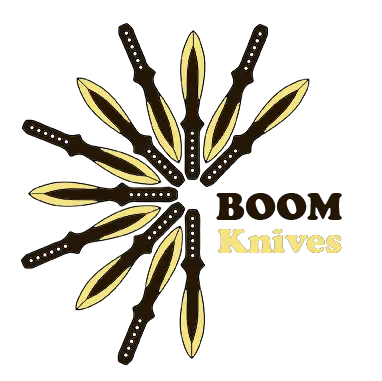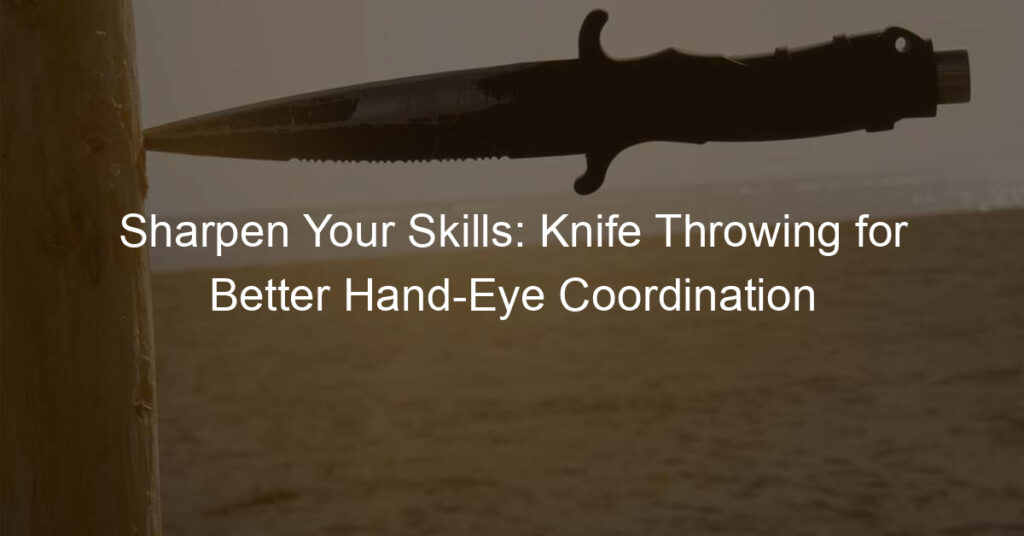Introduction to Knife Throwing
This ancient practice has evolved over centuries into a modern sport and art form. In this introductory section, we will explore the history of knife throwing and understand its significance as both a sport and an art.
-
- History and evolution of knife throwing
It began as a survival skill in prehistoric times, when early humans used thrown stones and later knives for hunting. Over time, this skill evolved into a form of combat and self-defense. The art of knife throwing was further refined in the Middle Ages, when it became a popular sport at fairs and festivals. Today, knife throwing is a recognized sport with international competitions and dedicated clubs worldwide. You can read more about the history of knife throwing on Wikipedia.
-
- Understanding knife throwing as a sport and art
Knife throwing is not just about hitting a target; it’s about precision, control, and the beauty of the throw. As a sport, it is governed by rules and regulations, with competitors aiming to hit specific targets for points. It requires physical strength, coordination, and mental focus. As an art, knife throwing is about the aesthetic of the throw and the satisfaction of mastering a difficult skill. It is a form of self-expression and a way to connect with a tradition that goes back thousands of years. Whether you are interested in competitive sport or artistic expression, knife throwing has something to offer.
Basics of Knife Throwing
- Types of Throwing Knives
-
- Blade-heavy knives: These knives have a heavier blade than handle. They are typically easier for beginners to throw because the weight of the blade helps guide the knife to the target.
- Handle-heavy knives: These knives have a heavier handle than blade. They require a bit more skill to throw accurately, but many experienced throwers prefer them for their balance and control.
- Balanced knives: These knives have an equal weight distribution between the blade and the handle. They are versatile and can be thrown from either the handle or the blade, making them a popular choice among many knife throwers.
-
- Basic Knife Throwing Techniques
- The Hammer Grip: This technique involves holding the knife like you would a hammer, with your fingers wrapped around the handle and your thumb resting on the spine of the knife. It’s a straightforward and easy-to-learn technique that’s great for beginners.
- The Pinch Grip: This technique involves pinching the knife between your thumb and index finger. It offers more control than the hammer grip, but it can be a bit more challenging to master.
Physics of Knife Throwing
Understanding the Science
-
- Role of gravity in knife throwing
When you throw a knife, gravity pulls it downwards. This downward pull affects how far and how accurately the knife will travel. The higher the throw, the more gravity will pull the knife towards the ground. So, a good knife thrower must understand how to work with gravity, not against it.
-
- Impact of air resistance
Also known as drag, is the force that opposes the motion of an object through the air. When a knife is thrown, air resistance slows it down, affecting how far it will go. The shape and size of the knife can also influence how much air resistance it experiences. A well-designed throwing knife is streamlined to minimize air resistance and maximize distance and accuracy.
Knife Throwing Dynamics
-
- Understanding the Spin
A knife is a crucial factor in successful knife throwing. When you throw a knife, it doesn’t fly straight to the target. Instead, it rotates or spins in the air. This rotation is what we refer to as the ‘spin’.
The number of spins a knife makes before hitting the target depends on the distance between the thrower and the target. For instance, a throw from a distance of 3 meters usually requires the knife to complete one full spin. Understanding this spin is essential for accuracy in knife throwing.
-
- Effect of Knife Weight and Size
The weight and size of a knife significantly influence its flight and accuracy. A heavier knife is more stable in flight and less affected by wind or air resistance. However, it requires more force to throw accurately.
On the other hand, a lighter knife is easier to throw but can be more easily deflected by wind. The size of the knife also matters. A larger knife is easier to control and has a better grip, but it may be harder to throw accurately due to its size.
Therefore, choosing the right knife for throwing is a balance between weight, size, and personal comfort. It’s advisable to start with a medium-sized, moderately weighted knife for beginners.
Scientific Approach to Knife Throwing
Knife Throwing Mechanics
-
- Importance of Grip and Stance
A firm, but not tight grip on the knife provides control and precision. Your stance should be comfortable and balanced. Your dominant foot should be slightly forward, providing stability and power for the throw. Wikipedia provides an in-depth look at different grips and stances used in knife throwing.
-
- Role of Release in Knife Throwing
The moment you let go of the knife is just as important as the way you hold it. A timely release allows the knife to spin and travel towards the target accurately. Releasing too early or too late can cause the knife to miss the target. Practice is key to mastering the perfect release.
Understanding these mechanics and practicing them can help you become a proficient knife thrower. Every thrower is different, so what works best for one person may not work for another. It’s all about finding what works best for you.
Science of Throwing Knives
-
- Understanding the Trajectory
A thrown knife is the path it follows from the moment it leaves the thrower’s hand until it hits the target. This path is influenced by several factors, including the angle of the throw, the speed of the throw, and the weight and balance of the knife. The trajectory is a parabolic curve, meaning it rises and then falls. The goal is to control this trajectory so that the knife hits the target at the desired point and angle.
-
- Effect of Distance and Target Size
As the distance increases, the thrower must adjust the angle and force of the throw to ensure the knife still hits the target. Similarly, a smaller target requires more precision. It’s important to practice at different distances and with different target sizes to become a versatile knife thrower.
Advanced Knife Throwing Techniques
-
Mastering the No-Spin Throw
Involves throwing the knife in such a way that it doesn’t spin in the air. This technique requires a lot of practice and control, but once mastered, it can greatly increase your accuracy.
Start by holding the knife by the handle, with your thumb on one side and your index and middle fingers on the other. Your grip should be firm, but not too tight. The key to a successful no-spin throw is to release the knife smoothly and at the right moment. As you throw, your wrist should remain straight and your arm should follow through in a straight line.
-
Practicing the Half-Spin Throw
Another advanced knife throwing technique. In this throw, the knife makes a half rotation in the air before hitting the target. This technique requires a good understanding of the physics of knife throwing, as well as a lot of practice.
Hold the knife by the blade, with your thumb on one side and your index and middle fingers on the other. As you throw, your wrist should flick slightly, causing the knife to spin. The key to this throw is timing your release correctly so that the knife hits the target blade-first.
Again, don’t be discouraged if you don’t get it right the first time. With practice, you’ll soon be able to perform a half-spin throw with precision and accuracy.
Case Studies: Successful Knife Throwers
-
- Profiles of Professional Knife Throwers
| Name | Years of Experience | Achievements |
|---|---|---|
| Adam Celadin | 10 | Five-time World Champion in Knife Throwing |
| Jack Dagger | 20 | Known as the “King of Fling”, multiple world records holder |
| Revolva | 15 | Renowned for her unique style and precision |
-
- Insights from Their Techniques and Practices
-
-
- Consistency: All successful knife throwers emphasize the importance of consistency in their throw. This includes the grip, stance, and throwing motion.
- Practice: Like any other skill, knife throwing requires regular and dedicated practice. The more you throw, the better you get.
- Focus: Knife throwing is not just about physical skill. It requires a high level of mental focus and concentration.
-
Conclusion: The Art and Science of Knife Throwing
-
- Recap of the physics of knife throwing
We’ve learned that it’s not just about strength, but also about understanding the principles of gravity, force, and motion. We’ve discovered that the perfect throw involves a delicate balance of speed and rotation, and that the type of knife and its weight distribution can significantly affect the outcome. This knowledge not only enhances our appreciation for the art of knife throwing but also helps us improve our own skills.
-
- Importance of understanding knife throwing science
By comprehending the physics involved, we can adjust our techniques to achieve more accurate and consistent throws. Moreover, this scientific approach allows us to appreciate the skill and precision required in knife throwing, transforming it from a mere hobby into a discipline that combines both physical prowess and intellectual understanding.
As we’ve seen, knife throwing is both an art and a science. It’s a practice that requires physical strength, precision, and a deep understanding of the principles that govern it. Whether you’re a beginner just starting out or an experienced thrower looking to refine your skills, we hope this post has provided you with valuable insights into the fascinating world of knife throwing.







